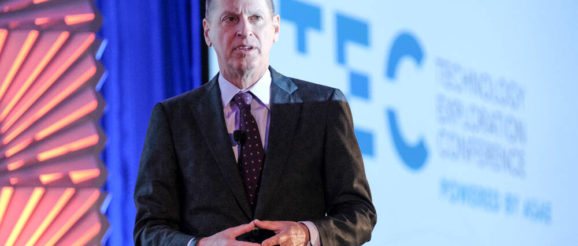#TEC19: How Diversity and Inclusion Power Tech Innovation


ASAE’s 2019 Technology Exploration Conference kicked off on Tuesday with a conversation focused on the value of diversity, inclusion, and human interactions in fueling future tech innovations.
Artificial intelligence, autonomous vehicles, blockchain, and the internet of things—these are the technology trends shaping our digital future. But without a diverse talent pool and meaningful human interactions, organizations of all types, including associations, will fall behind amid so much dynamic change.
That was the message from Consumer Technology Association (CTA) President and CEO Gary Shapiro in a keynote session opening the 2019 ASAE Technology Exploration Conference in Washington, DC, Tuesday morning. “Real innovation is the process by which we solve fundamental problems that we as humans will face,” Shapiro said. “I believe our future battles will be about technology, but the winners will come from a group of diverse and innovative thinkers committed to improving the human condition.”
That theme was echoed by keynote moderator Sherrell Dorsey, founder and CEO of ThePLUG, a digital publication that covers tech founders, innovators, and investors of color.
“When I think of diversity, I think of all my tech mentors who came from different races and backgrounds,” Dorsey said. “It has painted my worldview of what technology is, and it taught me how to look at a challenge and solve it.”
Build Bridges, Not Walls
On a global scale, Shapiro said, many of today’s leaders are focused on building walls—both literal and symbolic—when instead they should be building bridges to enable collaboration.
“We’re seeing isolationism emerge, and it’s a world which is cleaving right now,” he said. “I think associations can be a force to build community and construct real human progress and innovation.”
But doing that requires a diverse group of people who can be “designers of their own digital experience,” Dorsey said. She suggested that one way associations can do this is to host hackathon-style events, which bring together many different people for hours or days of problem solving around a specific technology issue.
“I think that can also help associations rethink whether certain technologies or practices are inclusionary or exclusionary,” Dorsey added. “Take data collection, as an example. Often you have to ask yourself: “Who or what’s missing?” Because certain groups may go hidden in an association.”
Create Diverse Teams
Increasing diversity—asking “Who’s missing?”—also matters in workforce development and hiring practices, especially in critical technology positions. “We need diverse teams if we want to adopt a culture of innovation,” Shapiro said. “That means hiring and developing a team that thinks differently from you.”
He noted that many technology companies have lagged in recruiting and promoting women and people of color, which is why CTA sets aside funding to help its members hire workers from underrepresented groups. And earlier this year, CTA announced new D+I initiatives for its annual Consumer Electronics Show, including an “Innovation for All” presentation track and a grant-funded program for women and other underrepresented entrepreneurs who can exhibit for free in a designated startup space.
“You have to reach out to different people and move away from your comfort zone,” Shapiro said. “I think diversity and inclusion is a continuous process where you always need to be working toward steady improvements.”
The post #TEC19: How Diversity and Inclusion Power Tech Innovation appeared first on Associations Now.
